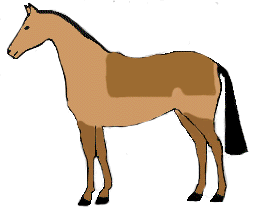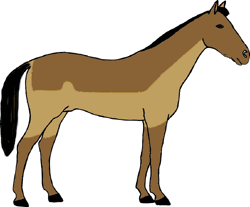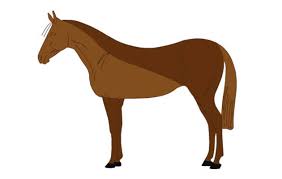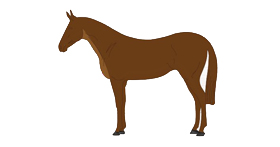Preparation and choosing a clip

If you have put away clippers from last winter, it’s best to get them out now and check them over, if they need a service or blades require sharpening, then it’s much wiser to have this done before you start clipping. There is nothing more frustrating than having a problem with blades or the clipper in the middle of clipping your horse.
If you haven’t clipped before and want to start, then there are a few points to consider when choosing a machine. Don’t just buy on price, consider whether you need a mains machine (with cable) or whether a battery operated one might be a better choice if you have limited or no access to power or if you horse may react to a long cable.
Be realistic, how many times a year are you likely to clip and how many animals would you be clipping on a regular basis. If you just have one to do, three or four times a year, and it is not a heavy coated cob type, then a lightweight clipper may well be the best option – as well as being very competitively priced, they are generally very much quieter than the full size machines, and also have a pre-set tension, which makes them very easy to use.
If you are doing 2-4 horses regularly through the winter, then the next step up is a Medium Duty clipper. This will ensure that you have a robust powerful machine for most types of coats, and generally will be reasonably light to hold and not too noisy, although this will vary from manufacturer to manufacturer.
Heavy duty machines are designed for professional and yard use where four or more horses are being clipped several times a week. Machines in this category will be very robust, heavier to hold and invariably noisier due to being fitted with more powerful motors. Although they don’t always cost a great deal more than the medium duty clipper, it is unwise to buy a Heavy Duty machine unless needed for the heavy workload it is designed for.
If there are any specific requirements needed for a particular machine, it is always best to speak direct to the manufacturer or an independent clipper specialist who supply and repair. They will be able to advise you on all technical aspects and capabilities of the clipper that you have or are thinking about purchasing.
Before you start:
- Check that your machine has been serviced and blades have been sharpened before using them at the beginning of a new season.
- Make sure the machine is correctly tensioned – check manufacturer’s recommendations – each make of clipper will tension in a different way. Blades will heat up more quickly if tension is too tight and not clip properly if too loose.
- Ensure your horse is clean and dry. Any lumps of dirt or grit will quickly blunt the blades and make it hard work for the clippers to get through the coat.
- Bandage the horse’s tail and plait over the mane to keep all the hair out of the way.
- Think about the type of clip you need, which is going to depend on the amount of work and how much he usually sweats. The more you take off, the more you will have to rug and feed.
- It’s often easier to mark out the clipping lines before starting. Use chalk for outlining. Study the muscle lines on the legs and mark out accordingly.
- If you are using a mains powered machine, ensure a circuit breaker is fitted.
- Clip in a dry, well lit area with non slip flooring.
- It will be more stress free for you and your horse if you avoid feed and turnout times.
- Have a hay net ready to tie up once you have clipped the head. This tends to help keep a horse still whilst clipping.
- Have an assistant at the ready, particularly if it’s the first time you have clipped, or the horse’s first time of being clipped.
- Wear appropriate clothing – ie overalls (not fleece as the hair will cling!), sturdy footwear, and keep a cap on or tie hair back. If dealing with a youngster or difficult horse it is a good idea to put a hard hat on.
- Applying a spray coat gloss to the body hair before clipping, makes it easier to glide through the hair.
- Have a rug handy to put over the areas that have been clipped to ensure horse is kept warm and comfortable.
Got the machine – now what clip should I choose?
The type of clip that you choose depends on the amount of work your horse will be doing during the winter, how much he sweats and whether he is living in or out a lot.
If you choose to clip your horse, then you will be taking away his natural protection. In order to maintain his body weight and warmth, provision in the form of extra rugs and shelter will be needed. This may mean an exercise rug over his quarters when riding out if it’s really cold or wet, a high necked rug or combo type for turnout if his head and neck areas have been clipped. Extra under rugs may also be needed for very cold weather.
Full Clip The coat is completely removed. This is suitable for stabled horses which are in heavy work. Easy to keep clean and dry, but stable bandages as well as extra rugs may be needed for both in and out of the stable.
Hunter Clip All the coat is removed except for saddle patch and legs. Leaving the saddle patch and legs provides a degree of protection against saddle sores and scrapes whilst hunting. This clip is ideally suited to stabled horses that are in hard work, or hunting.

Blanket Clip The coat is removed to leave a covering over the quarters and under the saddle. Half of the head area is also clipped normally taking it to the level of the cheek pieces. This is a popular clip for horses that are in regular work giving extra protection and warmth to legs and quarters.

Trace Clip The coat is removed from the underside of the neck and belly and upper part of the hind legs. More or less hair can be removed by clipping the line higher or lower. The options are: Low, medium or high trace clip. Ideal for horses that are not worked as regularly and are turned out more.

Chase Clip The coat is removed from the underside of the neck and belly taking a diagonal line from the top of the gullet to the point of stifle. This is good for horse’s that sweat a lot around the girth and neck area, but allows the horse to keep a good covering of hair over his back.

Bib Clip The least amount of coat is removed, allowing removal of hair from the underside of the neck to the chest. The clip can be extended underneath the belly to make mud and sweat removal easier. Ideal for horses that are in light to medium work and are turned out more.

- 15th August 2013
